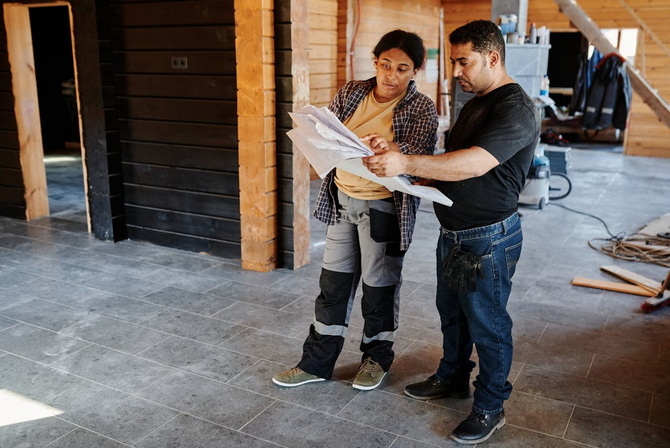Inclusive Design Principles: Crafting Floor Plans With Accessibility in Mind
In a world where every step matters, our spaces should embrace everyone — regardless of ability or mobility. Welcome to our exploration of inclusive design principles, where we’ll delve into the art and science of crafting floor plans that prioritize accessibility. From wide hallways that allow for smooth navigation to strategically placed elements that empower individuals with diverse needs, inclusive design creates environments that foster connection and independence. Join us as we uncover practical strategies and innovative ideas to transform your spaces into welcoming havens for all, proving once and for all that great design knows no boundaries.
The Basics of Accessibility
Accessibility in architectural design refers to creating environments that people with various abilities and disabilities can use. This includes individuals who use wheelchairs, have limited mobility, or face sensory impairments. To ensure accessibility, designers must adhere to standards such as the Americans with Disabilities Act (ADA) in the United States, which provides guidelines for accessible design. These guidelines encompass various elements of floor plans, from entrances to room layouts, and aim to remove barriers that could impede access.
Critical Elements of Accessible Floor Plans

Entrances: An accessible floor plan begins with a well-designed entrance. Ensure that entryways are wide enough to accommodate wheelchairs, typically a minimum of 32 inches. Ramps should be provided where steps are present, with a slope that does not exceed 1:12 to ensure ease of use. Automated or easy-to-operate doors are also essential, as they eliminate the need for manual effort in opening doors.
Circulation: Interior pathways must be designed with ample space for manoeuvrability. A minimum clear width of 36 inches is recommended for hallways and passageways. Turning spaces allow individuals using mobility devices to change direction quickly. Ensure that furniture and fixtures do not obstruct pathways and that there is sufficient room for turning in dining spaces and bathrooms.
Functional Spaces
Restrooms: Accessible restrooms require careful planning to accommodate diverse needs. Stalls should be at least 60 inches wide, with grab bars installed to assist users in transferring from wheelchairs. Sink and mirror heights should be adjustable or positioned to be usable from a seated position. Ensure that faucets are operable with one hand and do not require tight gripping.
Kitchen and Dining Areas: Lower countertops and accessible appliances are critical in kitchens. Allow sufficient clearance under counters for wheelchair users and ensure that appliances are within easy reach. In dining areas, tables should be at a height that accommodates wheelchair users, with enough space underneath for a close approach.
Signage and Communication
Signage: Clear, easily readable signage is crucial for accessibility. Use high-contrast colors and large, legible fonts. Incorporate Braille on signs where possible, and ensure that signs are placed at appropriate heights for standing and seated individuals.
Communication Aids: Consider including visual and auditory communication aids in public spaces. For example, hearing induction loops or other assistive listening systems can be installed in areas where announcements or presentations occur.
Compliance and Best Practices
Adhering to Standards
Following legal standards is a key aspect of designing accessible floor plans. In addition to ADA guidelines, consult local codes and regulations, which may have additional requirements. Regularly review updated standards to ensure ongoing compliance.
Engaging With Users
Incorporate feedback from individuals with disabilities during the design process. Engaging with users with firsthand experience of accessibility challenges can provide valuable insights and help identify potential issues that may not be evident during a general review.
Offering Flexible Design Solutions
Consider adopting a universal design approach. This approach aims to create spaces that are inherently accessible to all users. It involves designing environments that are adaptable and flexible, reducing the need for specialized modifications.
Designing for accessibility is not just about meeting legal requirements—it is about creating inclusive spaces that enhance the quality of life for everyone. By focusing on critical elements such as entrance design, circulation, functional spaces, and signage, architects and designers can ensure that their floor plans accommodate the diverse needs of all individuals. Embracing accessibility as a core principle in design fosters an inclusive environment and demonstrates a commitment to creating spaces that are welcoming and functional for everyone.
…

